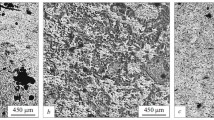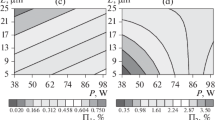Abstract
The formation of a block titanium sponge is considered in this paper on the basis of an analysis of the hydrodynamic flows in melted magnesium. It is suggested that the principal driving force in the organization of the flows in the melted magnesium is the zone of high temperature and pressure forming in the place of falling of jet titanium tetrachloride on the surface of melted magnesium. A presence of this zone causes the formation of a fan-shaped jet, which determines the process of forming the block titanium sponge.
Similar content being viewed by others
References
S.V. Ogurtsov and V.A. Reznichenko, Titanium and its Alloys, 5 (1960), p 132.
V.V. Rodjikin, V.E. Geger, and V.M. Scrypnjuk, Magnesium-Reduced Production of Spongy Titanium (Moscow: Metallurgija, 1971).
V.A. Garmata, A.N. Petrunko, N.V. Galitsiy, Ju.V. Olesov, and R.A. Sandler, Titanium (Moscow: Metallurgija, 1983).
G.N. Abramovich, Theory of Turbulent Jet (Moscow: Nauka, 1984).
E.Ya. Sokolov and N.M. Zinger, Jet Apparatus (Moscow: Energoatomizdat, 1989).
Rights and permissions
About this article
Cite this article
Putilin, A.I. A new hydrodynamic theory of forming block titanium sponge. JOM 63, 66–68 (2011). https://doi.org/10.1007/s11837-011-0080-8
Published:
Issue Date:
DOI: https://doi.org/10.1007/s11837-011-0080-8




